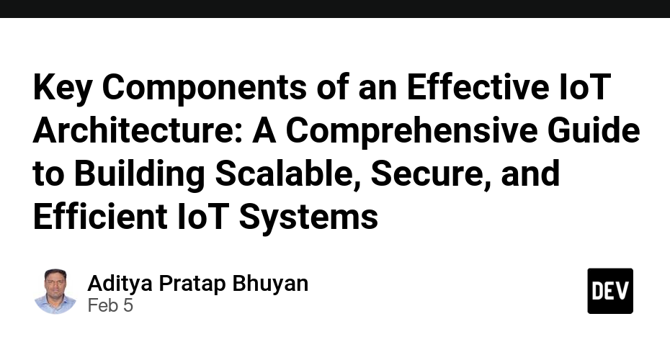Dev
1M
256

Image Credit: Dev
Key Components of an Effective IoT Architecture: A Comprehensive Guide to Building Scalable, Secure, and Efficient IoT Systems
- To harness the full potential of the Internet of Things (IoT), a robust and well-designed architecture is essential.
- Effective IoT architecture is the backbone of any IoT system, ensuring that all devices, connectivity, data processing, and security measures work harmoniously together.
- At the foundation of any IoT architecture lies the physical devices or “things.” These devices include sensors, actuators, and embedded systems, which are responsible for collecting data from the environment or taking actions based on instructions received.
- The connectivity layer is responsible for the communication between devices and other parts of the IoT architecture. This layer enables the seamless transmission of data from edge devices to gateways, cloud platforms, or centralized systems.
- Once data is collected from IoT devices, it needs to be processed and stored in a manner that allows for easy retrieval and analysis. This is where the middleware layer comes into play.
- With the vast amounts of data collected by IoT systems, analytics becomes crucial for extracting valuable insights that can drive actions or inform decision-making.
- The applications and services layer represents the final point where IoT data is put into use. The data generated by IoT devices and processed by analytics systems is displayed to end-users in the form of dashboards, reports, or control interfaces.
- Security is perhaps the most critical aspect of any IoT architecture. Data encryption ensures that sensitive information is securely transmitted across the network and stored in databases.
- The cloud platform is where the heart of IoT systems lies, providing the processing power, storage, and scalability needed to handle the vast amounts of data generated by IoT devices.
- An effective IoT architecture often uses both edge computing and cloud computing to strike a balance between real-time decision-making and powerful, large-scale data processing.
Read Full Article
15 Likes
For uninterrupted reading, download the app